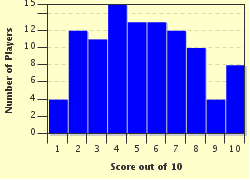Quiz Answer Key and Fun Facts
1. When was food rationing first introduced in Britain?
2. What basic foods were the first to be rationed?
3. The amount of food available on the ration changed throughout the war as goods became more or less available but which of these was a typical weekly ration for one person?
4. Eggs were first rationed in June 1941. If you had the room, then keeping chickens was the obvious answer. However, if you kept chickens, you lost your egg ration, but this was offset with a grain allowance for feeding the chickens. Another problem was how to preserve eggs when the hens were laying well to cover the times when they weren't laying. Which of these was NOT a method housewives used for preserving eggs during the war?
5. The Dig For Victory Campaign encouraged people to grow as many of their own vegetables as they could, with people digging up prized lawns and flower beds to create vegetable patches. Which of these famous places was NOT dug up to support the Dig for Victory campaign?
6. In 1941 Francis Latry, the head chef at the Savoy Hotel, London, created a special wartime pie. It was meat free and designed to be adaptable, using a mixture of whatever vegetables were available in a sauce with a pastry or potato topping. It was named after the head of the Ministry of Food. What was the pie called?
7. People were encouraged to eat plenty of home-grown potatoes in place of bread, which used imported wheat. The Ministry of Food created a character who gave helpful advice and recipes to enable housewives to make the most of the humble spud. What was his name?
8. As many foods all but disappeared during the war years, the word 'mock' often cropped up in recipe titles. Mock oyster soup contained artichokes, mock crab was a mixture of scrambled egg and cheese and mock cream was a mixture of margarine, sugar, dried milk powder and milk. What sweet root vegetable was often mashed, given a few drops of banana flavouring and pressed into service as mock banana?
9. Although some foods vanished during the war years, from time to time new foods appeared on the market, and this was true of snoek, which turned up towards the end of the war. What was snoek?
10. When did food rationing come to an end?
Source: Author
alex_april
This quiz was reviewed by FunTrivia editor
WesleyCrusher before going online.
Any errors found in FunTrivia content are routinely corrected through our feedback system.

